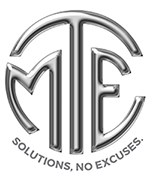It can be a large undertaking to remodel your commercial kitchen; however, menu changes or process inefficiencies can make it necessary for change. Once you’ve decided it is time for your restaurant kitchen remodel, identify the reasons behind the remodel before you put plans in place.
First determine why you’re planning a commercial kitchen remodel and what goals you want to accomplish. For example, a TME client recently added a new menu item to their offerings, and to prepare the dish, a new piece of kitchen equipment was required. You too could be in the same position. Your commercial kitchen was initially optimized for the menu and food preparation processes that were in place at the time, and a new piece of equipment might not fit into the current layout.
On the other hand, your restaurant kitchen may simply be outdated, causing inefficiency. It may time to update appliances and tools and create a commercial kitchen that utilizes space to the fullest. TME’s experts have helped clients determine a resourceful layout that makes it possible for their culinary staff to produce more food that tastes better at a faster rate, thus serving more customers and increasing profits.
Once you have a goal (or goals) in mind, your team – which could include your chef, contractor, architect and food-service design-build company, like TME – can begin to put plans together. Set a budget and work through your options. TME recommends you also consider custom fabrication for equipment, cabinets, wall panels, shelving, countertops and refrigeration. When your commercial kitchen is tailored to your exact specifications and your culinary team’s needs are precisely met, you’ll see the efficiency of the space increase drastically.

